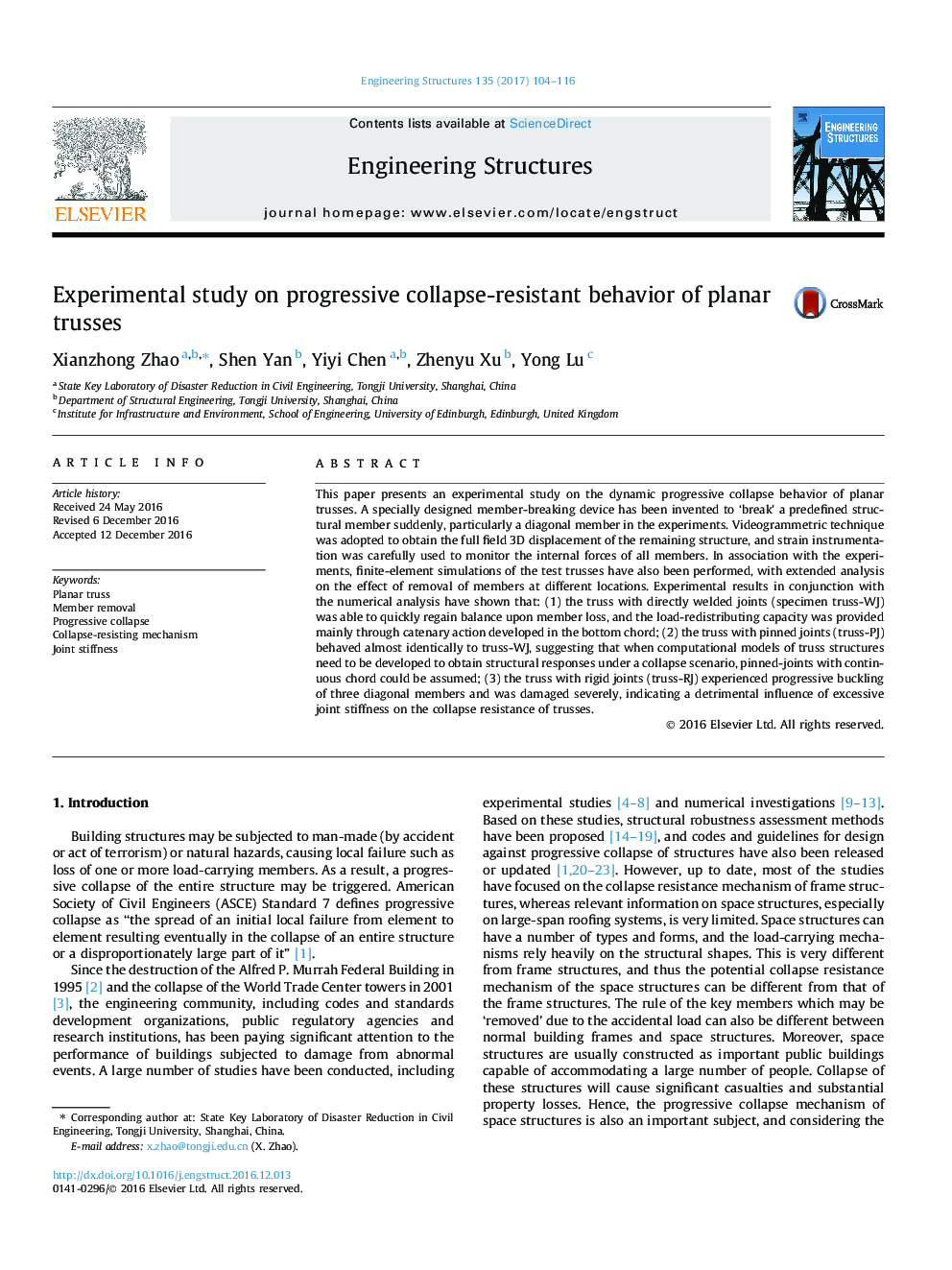| Article ID | Journal | Published Year | Pages | File Type |
|---|---|---|---|---|
| 4920532 | Engineering Structures | 2017 | 13 Pages |
Abstract
This paper presents an experimental study on the dynamic progressive collapse behavior of planar trusses. A specially designed member-breaking device has been invented to 'break' a predefined structural member suddenly, particularly a diagonal member in the experiments. Videogrammetric technique was adopted to obtain the full field 3D displacement of the remaining structure, and strain instrumentation was carefully used to monitor the internal forces of all members. In association with the experiments, finite-element simulations of the test trusses have also been performed, with extended analysis on the effect of removal of members at different locations. Experimental results in conjunction with the numerical analysis have shown that: (1) the truss with directly welded joints (specimen truss-WJ) was able to quickly regain balance upon member loss, and the load-redistributing capacity was provided mainly through catenary action developed in the bottom chord; (2) the truss with pinned joints (truss-PJ) behaved almost identically to truss-WJ, suggesting that when computational models of truss structures need to be developed to obtain structural responses under a collapse scenario, pinned-joints with continuous chord could be assumed; (3) the truss with rigid joints (truss-RJ) experienced progressive buckling of three diagonal members and was damaged severely, indicating a detrimental influence of excessive joint stiffness on the collapse resistance of trusses.
Keywords
Related Topics
Physical Sciences and Engineering
Earth and Planetary Sciences
Geotechnical Engineering and Engineering Geology
Authors
Xianzhong Zhao, Shen Yan, Yiyi Chen, Zhenyu Xu, Yong Lu,
